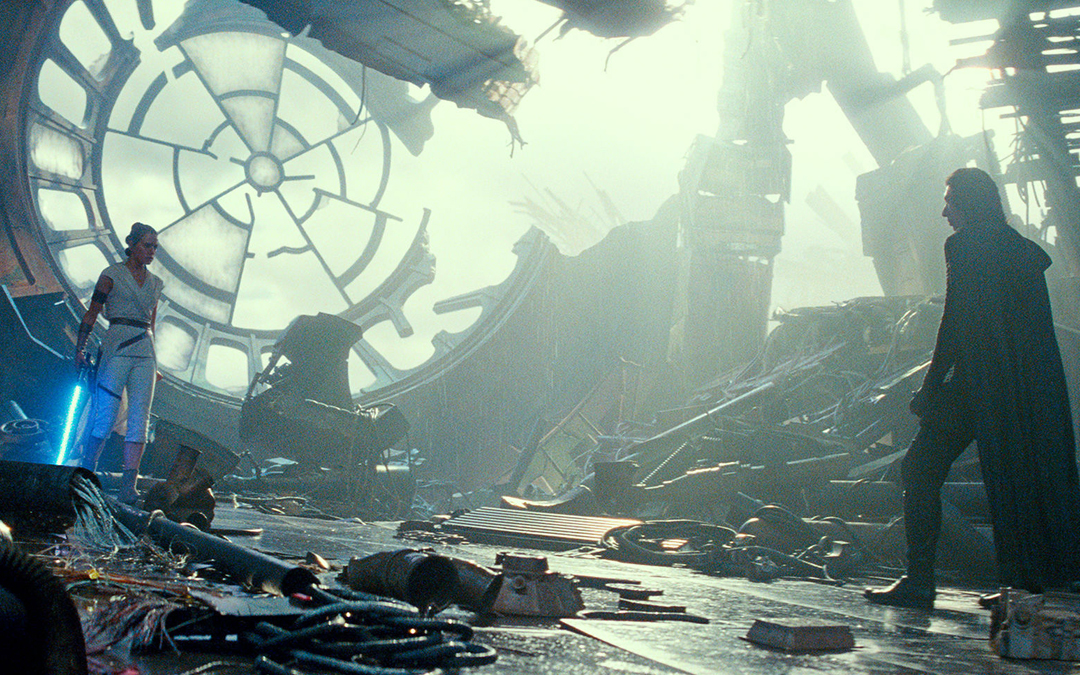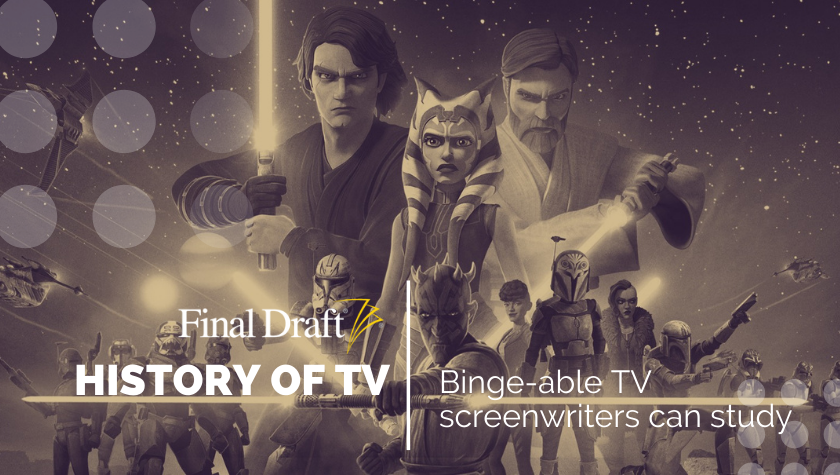4 Things ‘The Acolyte’ Can Teach You About Screenwriting
June 7, 2024
With 4.8 million views in one day, the latest Star Wars installment, The Acolyte, is Disney’s biggest streaming launch of 2024. And as a lifelong Star Wars enthusiast, I can see why.
Not only is it Certified Fresh at 91% on Rotten Tomatoes, but showrunner Leslye Headland (Russian Doll) is at the helm. She takes us on a winding journey to the final days of the High Republic, a century before the events of the Skywalker Saga, as a young former Padawan learner, Osha, played by Amandla Stenberg (The Hate You Give), is on the lam after being accused of a string of mysterious murders and her former teacher, Jedi Master Sol, played by Squid Game star Lee Jung-jae, is out to find her.
Here is the official logline for the series: An investigation into a shocking crime spree pits a respected Jedi Master against a dangerous warrior from his past. As more clues emerge, they travel down a dark path where sinister forces reveal all is not what it seems…
With that in mind, let’s explore the screenwriting of the first two episodes of The Acolyte.
Spoiler Warning: This post contains spoilers for Episode One and Episode Two of The Acolyte.
How To Write a Prequel
A good prequel should stand on its own for audiences who are introduced to the franchise for the first time. It should also offer exciting new information about the world and insider winks for returning fans. The Acolyte, so far, does both quite well.
Star Wars sets itself apart from other sci-fi space series due to the Force, an energy field created by all living things that binds the universe together. Force-sensitive creatures can use the Force to harness supernatural abilities such as telekinesis, telepathy and mind control, increased reflexes, healing, transference, prescience, and more.
By choosing to concentrate specifically on Jedi lore in an early time period, the writers were able to explore questions that Star Wars fans have long pondered. For some perspective, here is a refresher on the timeline of galactic history: The Old Republic was an era 25,000 to 1000 years before Star Wars Episode IV: A New Hope. During that time, the Republic was founded, the Jedi Order emerged to protect it, and a schism within the Jedi led to the creation of the Sith.
The High Republic was about 500 to 100 years before A New Hope. It was a golden age of the Republic under the protection of the Jedi Order and the Senate. At some point during this time period, the Sith will become forgotten.
The Skywalker Saga (Episodes I-IX) takes place during the Great Jedi Purge when those long-forgotten Sith return under the helm of Sheev Palpatine and destroy the Jedi Order.
So it is during the final years of the High Republic—again, one hundred years before the Skywalker Saga—that The Acolyte takes place. In the opening scrawl, we learn that “in the dark corners of the galaxy, a powerful few learn to use the Force in secret.”
It is exciting to know what happens in the future without knowing how it will come to be—or what becomes of the characters we are watching. A prequel must balance that line, teasing what is known with stakes that are still real within what is unknown.
Read More: History of TV: In a galaxy far, far away, 'The Clone Wars' were.

How To Build A Mystery
Because the Sith so often operate in secret, stories about their training, traditions, desires, and deeds are a trove of intrigue for writers. The first two episodes of The Acolyte tap into this, building a mystery surrounding who is teaching these dark Force users and why.
The pilot sets up what could have been a murder mystery—did Osha kill Jedi Master Indara (Carrie-Anne Moss)?—but the writers wisely solved the murder quickly: it was Osha’s twin sister, Mae, who was long thought to be dead. Instead, the mystery for the audience is much more nuanced; how did Mae survive? Why did she kill Indara? Who has trained her to use the Force?
Unraveling these mysteries is much more compelling than trying to solve a murder case, especially considering what Mae means to Osha. The series wisely keeps us questioning what happened when Osha was rescued by the Jedi Order and Mae was left behind.
Read More: Write On with 'Murder Mystery' Writer James Vanderbilt
How To Explore Grief
While we don’t yet know what precisely happened on Osha and Mae’s home planet, we do know that something sundered their family apart and sent the twins each on a path of grief and trauma.
Despite objections to her age (eight years old) and loss, Osha trained as a Jedi Padawan for ten years before choosing to leave the Jedi Order.
Mae’s history is more of a mystery to us. Osha believed that Mae had started the fire that burned their village and killed their mothers. Jedi Master Torbin felt the need to atone to Mae, who offered him forgiveness in the form of poison from her homeworld. Finally, when Mae confronted Indara, the Jedi Master told Mae that “Jedi do not attack the unarmed,” to which Mae replied, “Yes, you do.”
Something happened that set Mae on a course of revenge against the four Jedi who were on her homeworld that day and led her to be trained in the Force in secret. Her grief has turned to rage.
The twins’ responses to the trauma of their childhood offer a Sliding Doors-like chance to explore grief.

You Don’t Have To Be Edgy To Be Good
Disney+ has released many live-action Star Wars series in the past few years: The Mandalorian, The Book of Boba Fett, Obi-Wan Kenobi, Andor, Ahsoka, and now The Acolyte. Of them, only Andor felt like it deviated from the normal tone of Star Wars.
While most of the franchise has a child-friendly quality to its space-western David-versus-Goliath stories, Andor was a mature and deadly serious look into the risks of rebelling against tyranny.
The Acolyte so far falls into safe and familiar territory. Despite Jedi Masters succumbing to Mae’s murder spree, there are comedic moments and even a cute droid in the form of Pip. This isn’t a bad thing. The Acolyte is intriguing without being stressful. It features mythology and lore at a fast-moving pace. The characters are diverse and compelling—I care about them, even the darker Mae and Qimir (Manny Jacinto), the smuggler/alchemist/maybe even fellow Sith trainee.
---
After the first two episodes, The Acolyte is well positioned to explore the opposite paths of the Force through the twins Osha and Mae—one light, one dark. The writers have introduced the two characters as people we care about and, significantly, as people we are curious about. Creating mystery as a propulsive force is an excellent tool for storytellers, and combining the questions about the twins’ origin stories with intrigue about the Sith means audiences get a double dose of curiosity for what will happen next.
Read More: Screenwriter John McNamera cleverly structures Trumbo like Star Wars
Written by: Shannon Corbeil
Shannon Corbeil is a writer, actor, and U.S. Air Force veteran in Los Angeles with appearances on SEAL Team and The Rookie. She was also a 2023 DGE TV Writing Program Finalist, and her screenplays have placed in various contests. You can read more about her on her website or come play on Instagram and Twitter!- Topics:
- Discussing TV & Film




